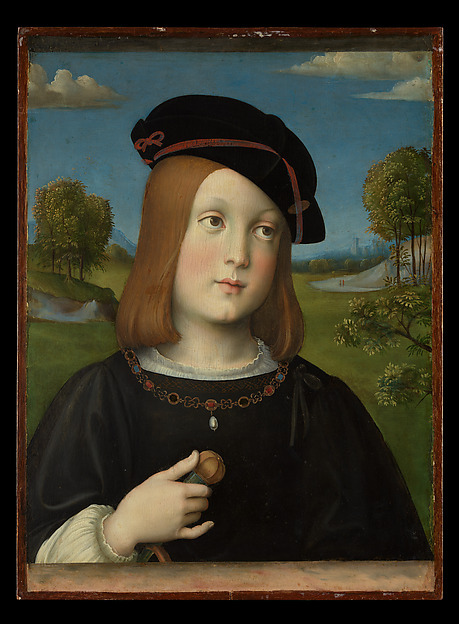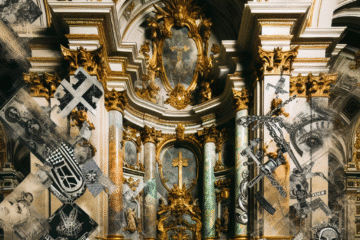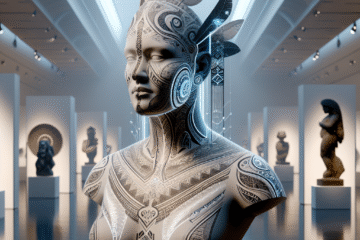
Image title: Federico Gonzaga (1500–1540)
Medium: Tempera on wood, transferred from wood to canvas and then again to wood
Date: 1510
Source:
The Met Collection
“
The world is but a canvas to the imagination.
”
— Henry David Thoreau
From Canvas to Console: Fine Art References in Video Game Design
Introduction: Bridging Centuries Through Pixels
Art has always been a mirror of human thought, technology, and spirit. As 21st-century media evolve, the video game has become one of the most immersive and complex expressions of art and storytelling. Surprisingly, many of these digital worlds echo the techniques, symbolism, and visual languages of centuries-old masterpieces. From Renaissance chiaroscuro to the fractured landscapes of Cubism, classical and modern artworks frequently inform the aesthetics, themes, and character design in video games. This blog explores how different artistic eras and their philosophical underpinnings shape the visual architecture of modern gaming.
1. The Renaissance: An Age of Perspective and Ideal Forms
The Renaissance redefined Western art with its embrace of linear perspective, harmony, and humanism. These principles directly influence game environments that strive for realism and narrative depth. For example, Ubisoft’s Assassin’s Creed II is celebrated for its nearly encyclopedic recreation of Renaissance Florence, meticulously rendered based on paintings and architectural studies. Even the concept of ‘god games’ like Black & White plays with Renaissance ideology—placing humans or players at the quasi-divine apex of order and control.
Philosophically, the Renaissance belief in man as the measure of all things aligns with first-person perspective games, where the player’s view and agency shape the narrative. The use of symmetry and proportion in level design—akin to Da Vinci’s Vitruvian Man—reinforces an aesthetic grounded in order and balance.
2. Baroque Drama and the Theatrics of Emotion
Baroque art, with its dramatic lighting and emotional intensity, finds echoes in the visual storytelling of games like Bloodborne and Dark Souls. These titles use chiaroscuro lighting, similar to Caravaggio’s work, to immerse players in gothic, suspense-laden atmospheres. The game environment becomes a cathedral of shadows and suffering, borrowing from the religious and existential gravitas found in 17th-century painting and sculpture.
Beyond aesthetic parallels, Baroque art’s exploration of divine judgment, mortality, and salvation connects deeply with the moral dilemmas posed in games. The grandiosity and theatricality of the era translate into boss-fight arenas and narrative arcs that emphasize human vulnerability amid cosmic danger.
3. Romanticism and the Sublime Digital Landscape
Romantic-era painters like Caspar David Friedrich and J.M.W. Turner emphasized emotion, nature’s majesty, and the sublime. Video games like Journey and The Legend of Zelda: Breath of the Wild reflect similar sensibilities, where vast landscapes evoke awe, solitude, and transcendence. Game design here is less about photorealism and more about evoking feeling through scale, color, and composition.
The philosophical alignment is clear—Romanticism’s valorization of the individual spirit and emotional truth resonates with the open-world genre’s encouragement of player-driven exploration and story-making. These games often turn landscapes into metaphors, echoing Friedrich’s lonely wanderers peering into mist-covered valleys.
4. Modernism and Experimental Aesthetics
As art splintered into movements like Cubism, Surrealism, and Expressionism, it broke from realism to explore abstraction, psyche, and perception. So too have indie games and experimental titles embraced this fragmentation. Superliminal and Antichamber use perspective and visual paradoxes reminiscent of Escher and Picasso, bending space and logic to make players question the nature of reality.
Surrealist influences are perhaps most visible in games like Control and Inside, where uncanny spaces and hallucinated realities probe Jungian archetypes and subconscious fears—akin to Dali or Magritte. Technological advancements like ray tracing and procedural generation allow developers to mimic painterly textures or distort geometry, connecting with Modernist principles of breaking norms and expanding visual grammar.
5. Postmodern Play and Contemporary Collage
Contemporary games operate in dialogue with a postmodern art world defined by meta-narratives, ironic juxtapositions, and cultural remixing. They often appropriate or directly reference fine art, as seen in The Stanley Parable’s gallery scenes or Layers of Fear‘s tortured artist trope. In games like Bioshock, Art Deco design echoes not just a visual style but a commentary on the ideologies of individualism and consumer utopia.
Moreover, contemporary digital art trends influence game concept design, incorporating glitch aesthetics, vaporwave palettes, and AI-generated visuals. Game designers today are as likely to cite internet art collectives and NFT galleries as they are Hieronymus Bosch or Monet. This creates a cultural mosaic where high art, pop culture, and code converge—an ultimate fusion of art history and digital interactivity.
Conclusion: The New Gallery is Playable
Just as ink and oil once captured the essence of an era, today’s game engines craft interactive theaters where color, composition, and symbolism persist with renewed relevance. The fine art lineages embedded in video games are not mere flourishes, but deep-seated influences that shape how players see, feel, and navigate virtual spaces. As gaming continues to evolve, its affinity with art history not only honors the past but empowers new forms of aesthetic innovation. From canvas to console, the museum has found a new home—inside your joystick-driven journey.

Image description:
Fez cover art, designed by Bryan Lee O’Malley.
License:
CC BY-SA 3.0
Source:
Wikimedia Commons
Useful links:


